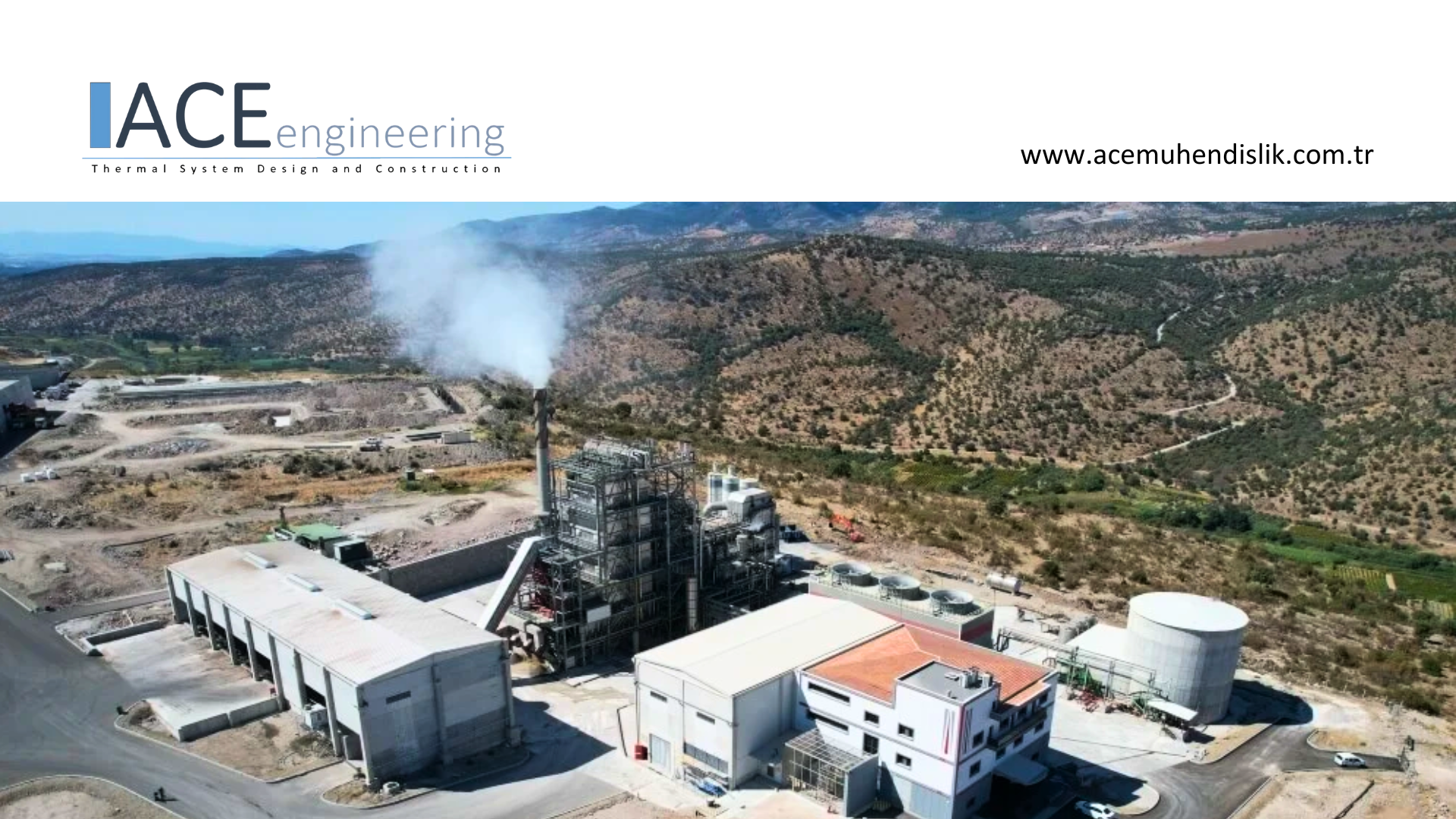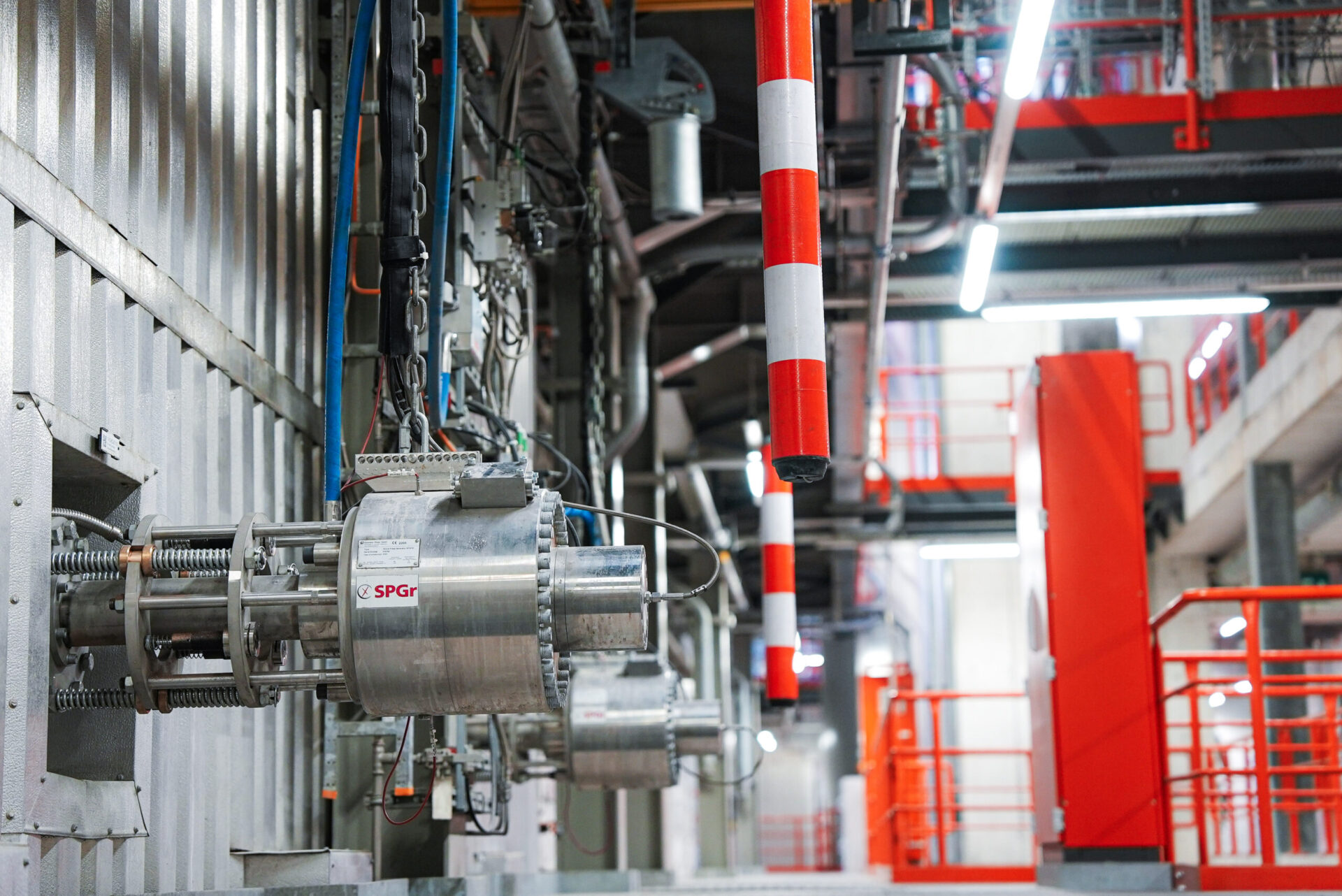A waste incineration plant uses the energy contained in waste to produce steam, which in turn is advantageously converted into electrical energy. Waste is the sole fuel for energy production. Due to technological constraints, only about 85% of the contained thermal energy can be utilized. The electrically operated aggregates consume about 2.5 to 4% of the up to 35% generated electrical energy. The rest is fed into the grid. Exhaust steam, which remains downstream the turbine, can be used advantageously for heating purposes in the district heating network. Where such a network is not available, the exhaust steam must be condensed to water in a condenser to be fed back to the steam boiler.
The overall energy balance
A waste incineration plant converts more than 85% of the energy contained in the waste into useful energy, which is usually obtained in the form of superheated steam in the steam boiler. The remaining part must be accepted as energy losses due to slag and fly ash discharge, the radiation to the ambient and the technologically induced minimum exhaust gas temperature. The superheated steam is converted into electrical power in a turbine. The modern plants reach an electrical efficiency of between 28% and 35%. The electrical energy yield is partly dependent on the ambient- or cooling water temperatures, which condense the turbine exhaust steam to water. It is advantageous to use the turbine exhaust steam for heating purposes in a district heating network, otherwise it must condense and be fed back to the steam boiler in the form of boiler feed water. In the ideal case, a heat pump could take the remaining energy from the flue gas and thus increase the overall thermal efficiency of a plant to over 100%.
The individual aggregates of the process chain are driven by electric motors, which consume electrical energy. We will dedicate our consideration to the needs of the electrical consumers, which consume about 2.5 to 4% of the generated electrical energy.
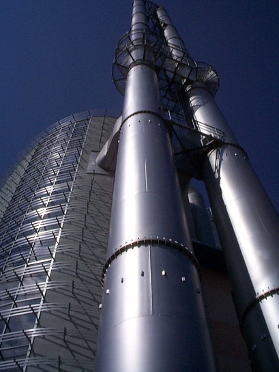
Fig. 1: Symbol of a waste incineration plant
What are the relevant electrical energy consumers?
Next, we follow a typical plant concept.
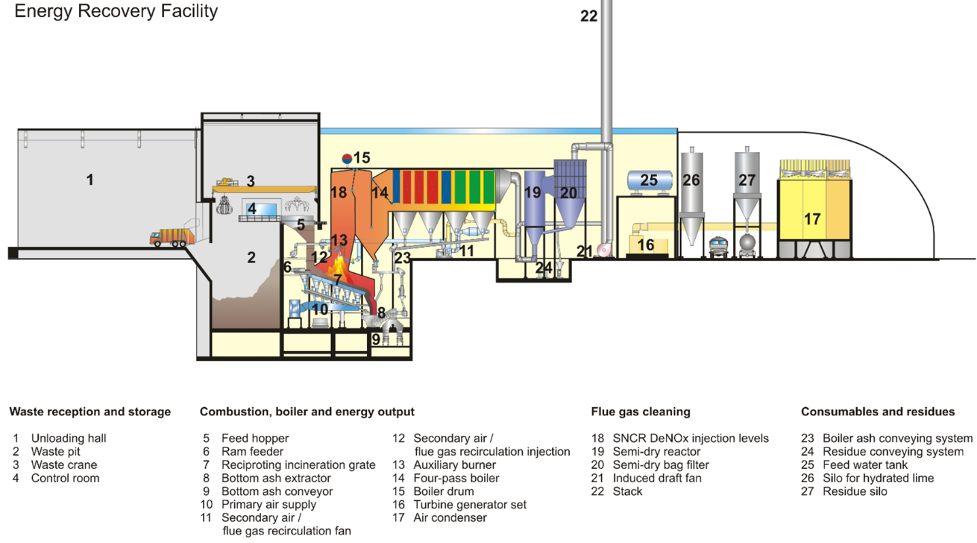
Fig. 2: Typical process concept of a waste incineration plant [von Roll Inova]
The waste cranes (3) are equipped with powerful drives, but due to the modern control technology with energy refeed, the energy consumption remains within the optimal range. The former waste cranes with relays technology had a lot of energy losses due to the switching operations and the associated thermal radiation, which had to be dissipated.
The primary air fans (10) and secondary air fans (11), as significant energy consumers, are nowadays equipped with frequency converters and such always operate in the optimal performance range thanks to the modern combustion control.
The feed water pumps are operated with high water flow rates at a corresponding boiler operating pressure, but even these are always operated in the optimum range. Therefore, the energy requirement corresponds to the respective flow rate. The modern electric motors are qualified of high-performance efficiency.
The exhaust steam condensers are either designed as water-cooled units, which in turn require high cooling water pump capacities, or often as air-cooled units (17). The fans of the air-cooled units operate in a considerable different load range and are therefore always equipped with frequency converters. In summer, during the day, they usually require the full, but regulated power supply. At night, when it gets colder outside, they are operated at partial load according to the outside temperature. In winter, a few stages are often switched off or operated at partial load, according to the outside temperature and the steam output rate.
The flue gas treatment system may consume different electric power. Depending on the type of process, the demand is rather higher (for wet processes) or moderate (for semi-dry processes) or rather low (for dry processes). The choice of the process type depends on many conceptual factors and therefore all processes, or a combination of them, must be considered as to be conceptually relevant. The highest electrical consumer is always the induced draught fan (21). We will deal with this topic in more detail in the following section.
The other electrical consumers are usually not relevant for consideration.
Influence of combustion on electrical energy consumption
A significant part of the flue gas volume forms the excess air, which is necessary for the combustion to sufficiently burn out the exhaust gases as well as the solid residues (slag and fly ash).
In the early days of waste incineration (fifties to seventies of the last century) the incineration was operated with an excess of air of more than 12 vol%O2. The fans were operated at full load and the control was achieved by throttling the flow rate. The combustion control had only several, and slow sensors to adjust the appropriate operating condition.
In the eighties, the excess air was reduced to approx. 8 vol%O2, which also led to a reduction in energy consumption. The boiler design has followed the new operating specifications.
In the nineties, when the «TA Luft» (Technical Instructions on Air Quality Control 2002) came into force, the excess air was set to a minimum of 6 vol%O2 with an flue gas retention time of 2 seconds above 850°C. This was decided for safety reasons, so that the organic waste gas components would burn out safely.
The current sensor technology of the combustion control and the optimized geometry of the combustion chamber allow an operation mode with excess air reduction down to 2.5 vol%O2 while maintaining the flue gas quality. The modern boiler design considers the aspects of maximum energy utilization.
Based on the above consideration it is evident, that the specific flue gas quantity per a waste calorific value unit has continuously decreased over the years. The effect was achieved due to technological developments. Particularly, the electrical power consumption of the fans is highly dependent on the excess air content in the combustion. Consequently, the energy demand of the primary and secondary air fans (10) and (11) and especially the induced draft fan (21) could be drastically reduced.
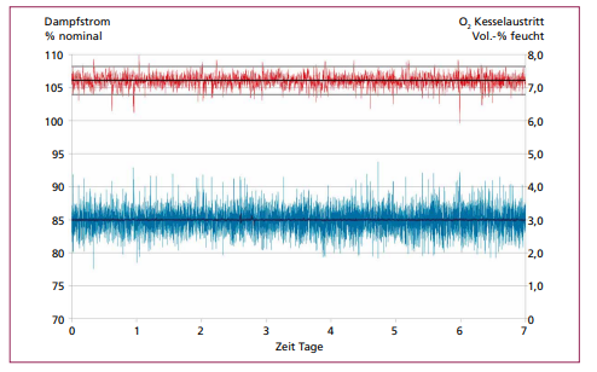
Fig. 3: Boiler operation at an average of 3 vol% O2 with largely constant steam production [Betriebserfahrungen mit O2 -Gehalt im Abgas unter 4.5 Prozent – M. Waldner, B. Malisova, HZI]
The effect on boiler fouling
With the reduction of the flue gas volume, generally less fly ash is discharged. This has an influence on the boiler fouling, especially at the current plants. The boiler flues suffer by less fouling. As well the new concepts shall follow the way. However, the «clean boiler» will always play an important role in maintaining a good heat transfer. Even in the future, the boiler cannot be operated without an effective and updated cleaning system.
Explosion Power GmbH is going along with the permanent development. New product «series SPGr» has been recently launched, as the Shock Pulse Generator (SPG) with compressed air and natural gas feed. These units, which again operate online and automatically, are even more compact than their companions and allow an extension in the maintenance interval. In addition, they can be used for even larger boilers, which is particularly useful in power plant engineering.
In parallel with the more than 700 SPGs with natural gas and oxygen feed successfully used so far, the SPGr has now been added to the company’s portfolio, which is operated with a compressed air feed instead of pure oxygen. The applications are optimized according to the customer’s application and a consultation with the experts of Explosion Power GmbH.
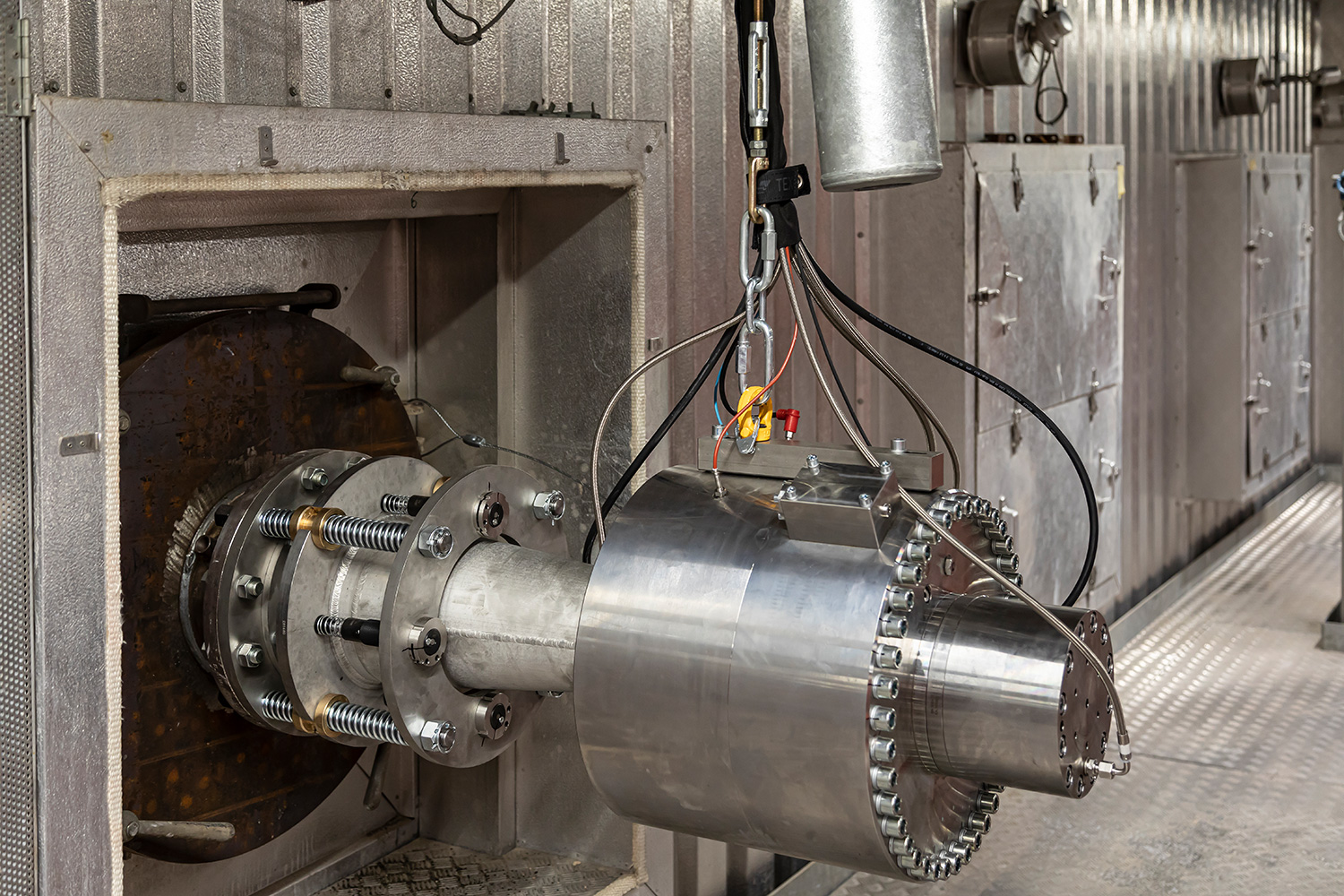
Fig. 4: Shock Pulse Generator – SPGr, the latest development [Explosion Power GmbH]


